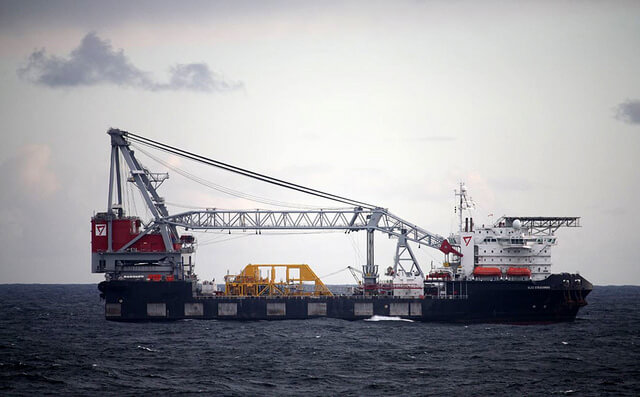After years of technology development, manufacturing and testing, the world’s first subsea wet gas compressor is installed on Gullfaks South, a satellite field linked to the Gullfaks C platform. Installation on the seabed was completed late in June 2015.
The next step is to connect the subsea compressor to the Gullfaks C platform.
The new underwater wet gas compression at Gullfaks C will add 22 million barrels of oil equivalent, and extend plateau production by about two years.
Bjørn Birkeland, Gullfaks subsea compressor project (GSC)’s manager commented:
“The installation campaigns have been successfully performed by Subsea Seven.”

Image: Statoil
Presently, engineers are resting and preparing the construction for handover and start-up for its full operational service, which is expected to happen between September and December 2015.
“This is the first compressor of its kind in the world. It is a milestone, not just towards the compressor start-up, but also for Statoil’s subsea factory visions,” says Steinar Konradsen, owner representative for the project.
Company officials said that engineers are continuing testing of the complete compressor station and the project works are going according to the plan.
Norwegian Apply Sorco performed some considerable preparations for the start-up of the subsea compressor on Gullfaks C as well, which are almost completed.
The video below shows the installation of Gullfaks subsea wet gas compression:
The compressor represents a robust and flexible measure to improve oil recovery (IOR) for the Gullfaks licence. The compressor will now be hooked up between the L and M subsea templates and Gullfaks C. It is also possible to tie in other subsea wells to the compressor through existing pipelines.
Specialists involved in the project believe that it might be even more beneficial compared to the preliminary expectations that they have, when they have started the project:
“Subsea wet gas compression is a game changer for subsea processing, and an important technology to increase recovery also on other fields,” Konradsen emphasises.
In May 2015, the heavy lift vessel Oleg Strashnov installed the protective structure and compressor station. A month later, the compressor and cooling modules were lowered into place from the Seven Viking.
By the end of summer, the plant will be tied back to the Gullfaks C platform.
About the Statoil projects:
The Gullfaks technology solution is a wet gas compressor which does not require any treatment of the well stream before compression.
Subsea compression provides a greater effect than a conventional topside compressor. In addition the platform avoids extra weight and space required by a topside compression module.
Statoil is currently implementing two subsea compression projects at Åsgard and Gullfaks on the Norwegian continental shelf (NCS) together with its licence partners.
The projects represent important pieces of the jigsaw puzzle of designing the subsea factories of the future.